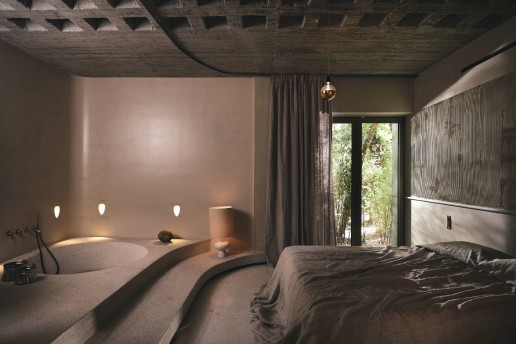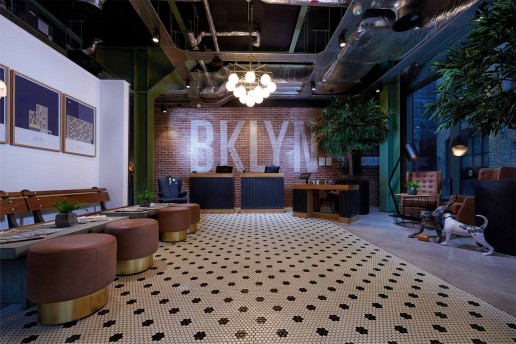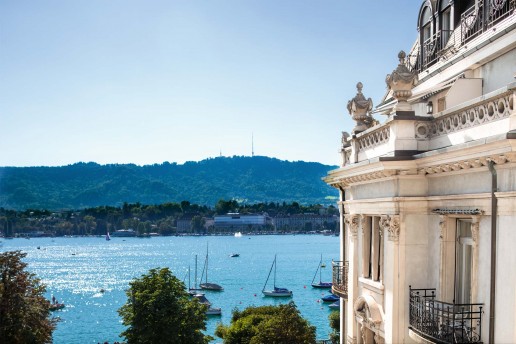Nestled in the Peak District National Park, the first UK property from Ensana Hotels champions the therapeutic mineral water for which its location is known.
As someone who grew up just a stone’s throw from the Peak District National Park, I’m well-acquainted with the beauty of Buxton, and understand why locals hold the town in such high regard; its rural character and rolling valleys are a welcome reprieve from the hustle and bustle of Manchester city centre to the north-west.
So when news broke that Buxton Crescent – the reincarnation of two hotels designed in the late-1700s by Yorkshire-born architect John Carr and modelled on Bath’s famous Royal Crescent – was finally set to open, it was music to everyone’s ears. Thirty-years in the making – yes, that’s thirty-years – there was concern that the Grade I-listed landmark would never again return to service, but thanks to support from the National Lottery Heritage Fund and a host of other investors, Buxton Crescent has reopened its doors.
The multi-million-pound project is the first UK outpost for Ensana Hotels, one of Europe’s largest operators of health spas and a custodian of utilising natural healing resources. Its primary aim is to revive the wellness traditions of the picturesque market town, a former Roman settlement built around a spring, which to this day continues to send up million of litres of naturally heated water from the original source beneath the hotel. The destination was renowned throughout Georgian times as a bathing place for spa seekers, who would travel the length and breadth of the country to bask in the thermal waters. Later in the 19th century, the hotel became a fashionable retreat for high-society visitors, who would take to the waters amidst the grand architecture, originally built for the 5th Duke of Devonshire. This 20th century reincarnation will see the hotel once again become a wellness destination.
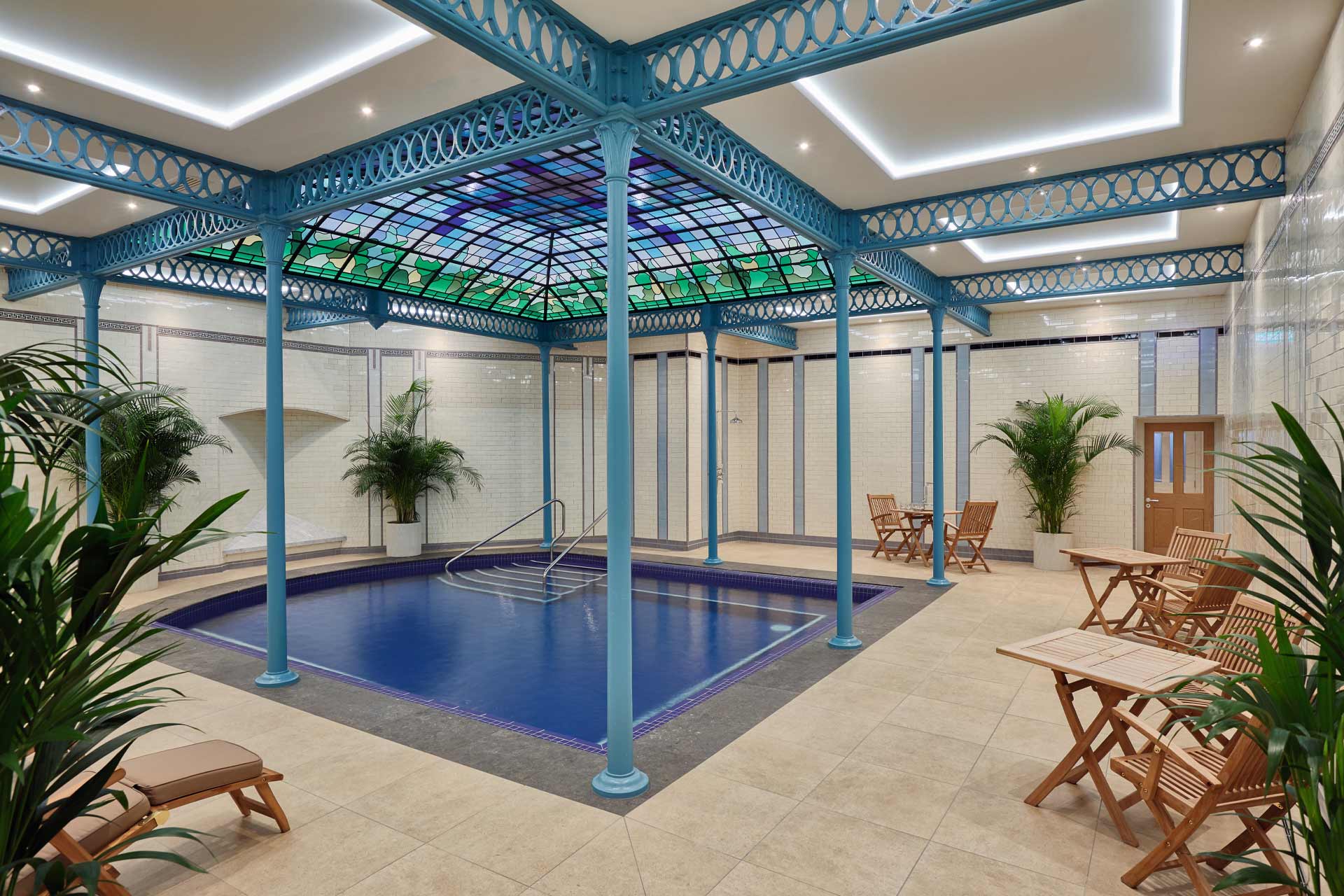
As with Ensana’s other properties across Europe, including resorts in Czech Republic, Hungary, Romania and Slovakia, the spa is paramount to the guest experience and immerses patrons in the therapeutic qualities of water. As such, the property is centred around three pools: the Thermal Pool, a fully refurbished Victorian pool with mineral rich water – heated and left chemically untreated – flowing into it; a relaxation pool with a black barrel ceiling pierced by celestial mood lighting; and an indoor-outdoor rooftop pool. In addition, eight treatment rooms – several of which feature original stained-glass windows – offer signature therapies such as a thermal mud pack using mud sourced from Heviz in Hungary, and a CO2 infusion mineral bath.
Tasked with reinstating the landmark building’s architecture and channelling a Georgian spirit inside, was London-based firm Curious, whose design scheme marries opulent chandeliers, painted ceilings and stained-glass windows with elegant furniture and modern comforts. Despite decades of neglect, there is still real character and charm at every turn, from the grandeur of the Assembly Hall – with its original chandeliers and gilt-topped Corinthian columns – to the exposed queen post trusses in the attic guestrooms, which provide an insight into the hotel’s anatomy.
“There’s staggering attention to detail throughout that acknowledges the history of the building and the town; every room has a story to tell,” says Marc Dorrian, Design Director at Curious. “Originally it was built as lodging houses bookended by a hotel at either side, so in some part there was a map to follow in terms of how the spaces would be utilised. Instead of fighting against it, we embraced and retained the elegance while adding touches that today’s guest is accustomed to.”
In restoring the structure to its former glory, locally quarried gritstone and timber beams were painstakingly revived, but not everything was salvageable, so Curious had to be sympathetic with its decorative choices. A new stained-glass canopy has been erected over the Thermal Pool for example, designed in blue and green hues to harmonise with the original cast iron beams and pillars. There was also the sourcing of tiles, stone and marble in shades and finishes that complement the original features; the incorporating of carpets by Ulster; and sourcing wallcoverings that allow the structure to breathe.
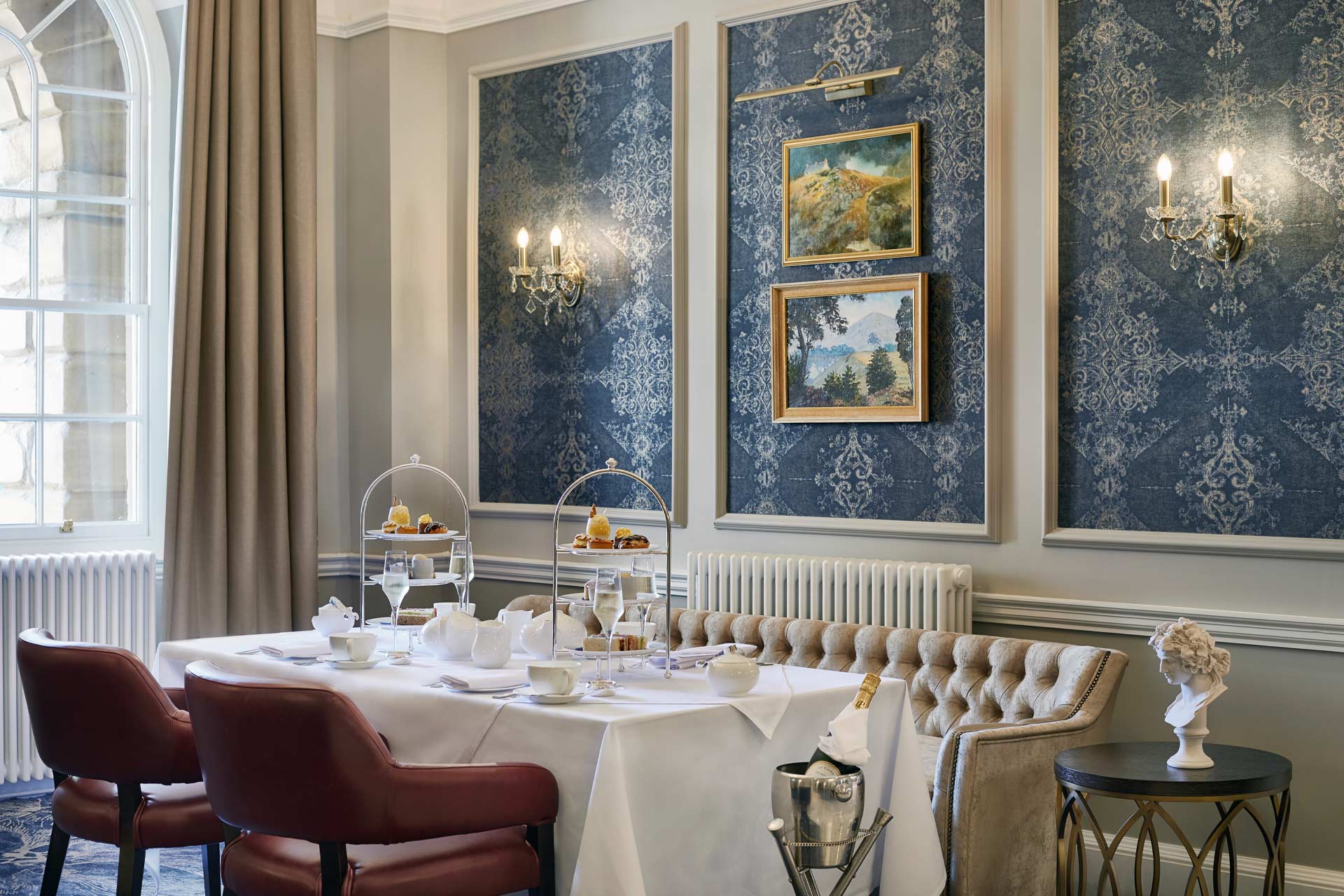
In the hotel’s main restaurant, The Dining Room, the contemporary ambience is again coupled with traditional elements, such as an intricate plastered ceiling, which cleverly disguises a number of access hatches. Despite being located in the building’s new extension, the space showcases the external crescent sandstone wall as part of the scheme, immersing diners in history as they tuck into a British menu of local, seasonal produce.
Across in The Lounge, an original stone fireplace anchors the space and sets the tone for the rich layers of leather and antique bronze, which accompany striking wallcoverings that celebrate nature’s diversity – a nod to Charles Darwin’s grandfather, who once visited Buxton to bathe in its waters.
Elsewhere, a spa café occupies a new floor above the original pools. With views over Grade II-listed public park The Slopes, the airy space allows guests to recharge, refill and relax without getting out of their robe, marrying calm blue and cream fabrics with splashes of yellow from a bespoke carpet. There’s also a terrace, though guests may want to wait for the warmer months to arrive before daring to venture out.
Upstairs, 81 guestrooms and suites – ranging from cosy Attic rooms to the 52m2 Crescent Suite – are steeped in more than two centuries of history, with several featuring four-poster beds, freestanding bathtubs and views through the sash windows over the surrounding slate roofs. Lighting by Chelsom softens the mood, while Addingham 1500 mattresses by Harrison Spinks – boasting a patented Revolution pocket spring system and natural fillings for maximum comfort and body temperature management – await guests as they return from the spa.
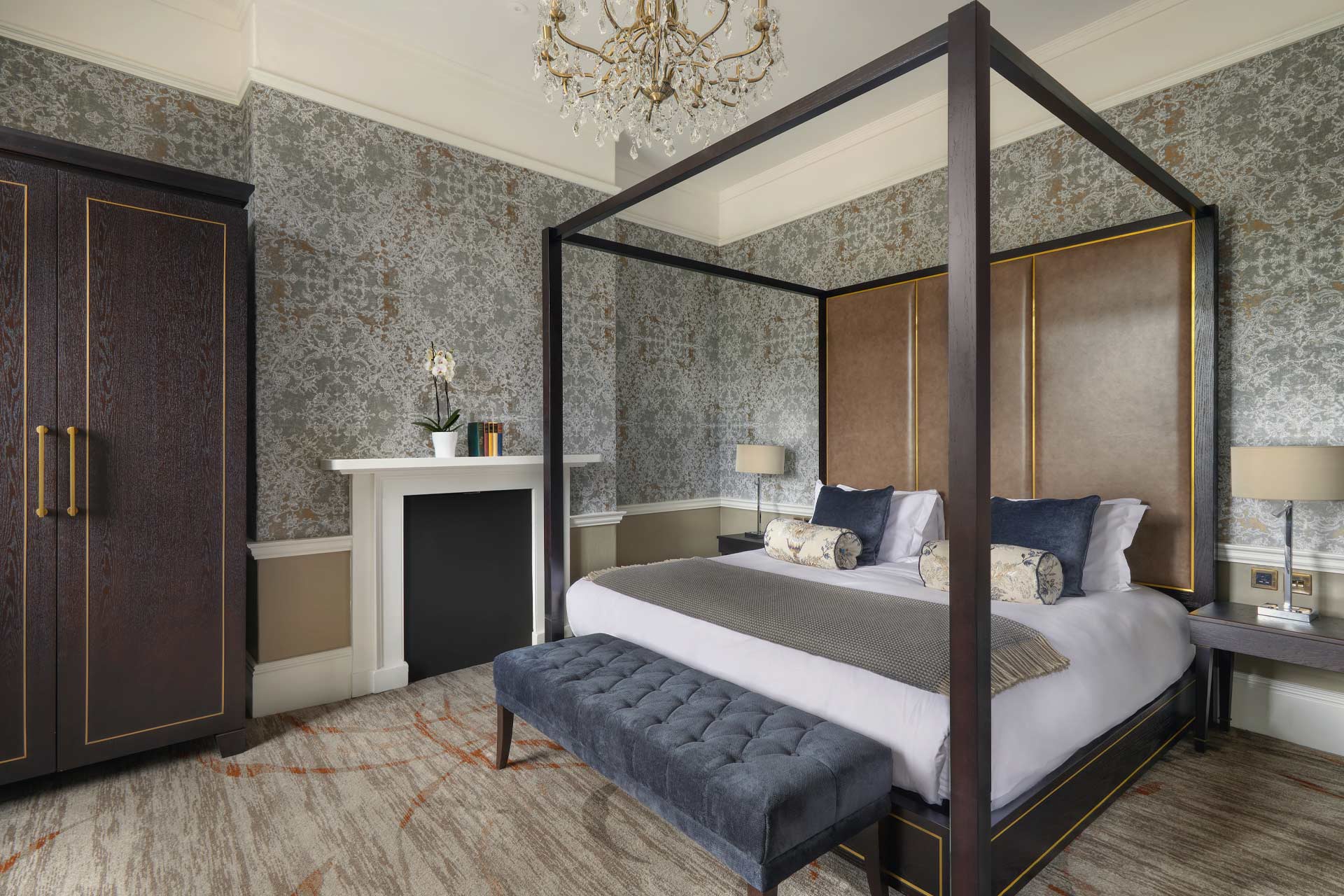
It’s an incredible feat and the momentous project didn’t come easy, with a number of complications along the way: “I have never worked on a project quite as challenging as this,” Dorrian confirms. “The amount of work behind the scenes has been the biggest challenge. Once construction started, it quickly became apparent that parts of the structural condition were far worse than anticipated.”
He continues: “Over 200 years of Buxton’s extreme climate had taken its toll on the building. Our architect, John Ferguson, was instrumental in solving most, if not all of these issues on a daily basis. General space planning was a dizzyingly complex exercise too, especially within the spa, with its multi levels and crossover between new and old. On top of that, the modern requirements and expectations of en suite facilities meant that the guestrooms had to be altered to meet this need. In some cases, we came up with a pod design that kept the integrity of the room intact without diminishing any of its historic features.”
There’s no doubt that the restoration of Buxton Crescent will put its namesake firmly back on the spa trail in the UK, submerging guests in the town’s heritage, architecture and therapeutic waters. “At a time when physical and mental wellbeing are at the forefront of our society, the spa may be well positioned post-pandemic, providing guests with a much-needed tonic,” concludes Dorrian. I, for one, will be amongst those checking-in for a relaxing staycation over the coming months.
EXPRESS CHECK-OUT
Owner: High Peak Borough Council and Derbyshire County Council
Developer: CP Holdings, Trevor Osborne Property Group
Operator: Ensana Hotels
Architecture and Interior Design: Curious
Conservation Architect: CTD Architects
Art Consultant: Inngear
Procurement: PCP Consulting
Main Contractor: Vinci Construction
Project Manager: Andrew Ryan
www.ensanahotels.com
CREDITS
Words: Ben Thomas
Photography: © John Athimaritis
Related Posts
19 November 2020
Feature: New Suites at Ekies All Senses Resort, Halkidiki
22 September 2020
Feature: Hotel Brooklyn, Manchester
21 September 2020
